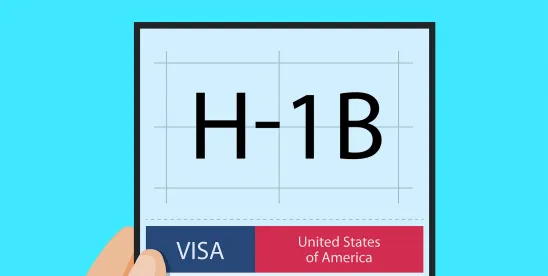The Department of Homeland Security (DHS) has published its Spring 2025 Unified Regulatory Agenda, outlining changes to immigration policies and enforcement procedures that may affect U.S. employers and their workforces. These regulatory developments represent a shift in approach from previous policies and require careful analysis and planning by HR departments and legal counsel.
Verified Regulatory Changes
Executive Actions Already Implemented
Based on official government announcements, several immediate policy changes have been in effect since January 2025. Executive Order 14159 revoked previous guidance limiting immigration enforcement in certain locations, and now allows enforcement actions at all workplace locations. Additionally, new screening procedures for immigration benefit applications have been implemented, including social media review for certain categories of applicants, which may extend processing times and require additional documentation preparation.
The administration has also reinstated alien registration requirements under Immigration and Nationality Act (INA) Section 262, making compliance with these registration obligations a priority for enforcement agencies. This affects foreign nationals who may not have been subject to registration requirements under previous policies. Furthermore, new fee structures under reconciliation legislation have been implemented, including asylum application fees that became effective July 22, 2025, which adds financial considerations to immigration planning.
H-1B Program Changes Already in Effect
H-1B and H-2 final rules took effect Jan. 17, 2025, implementing several modifications to these temporary worker programs. The most notable change was the introduction of a beneficiary-centric selection process for the FY 2025 cap season, which aimed to reduce gaming of the lottery system by focusing on individual beneficiaries rather than allowing multiple registrations. The rules also established streamlined approval processes for certain petition types, particularly for extensions and amendments where the basic circumstances remain unchanged.
Enhanced portability provisions for H-2B workers were also implemented, allowing greater flexibility for workers to change employers under certain circumstances. Additionally, all petitioners must now use the updated Form I-129 (edition 01/17/25) for any petitions filed on or after the effective date, with no grace period for the previous form version.
Proposed Regulatory Changes Under Review
H-1B Program Reform Initiative
According to the Spring 2025 regulatory agenda, DHS proposes to “reform the H-1B program by revising eligibility for cap exemptions, providing greater scrutiny for employers that have violated program requirements, and increasing oversight over third party placements.” The stated purpose is to “improve the integrity of the H-1B nonimmigrant program and better protect U.S. workers’ wages and working conditions.”
The proposed changes would include revisions to cap exemption eligibility criteria for universities and nonprofit research organizations, potentially affecting institutions that have historically been exempt from the annual H-1B numerical limitations. Enhanced compliance review procedures may be implemented for employers with previous violations, potentially resulting in increased documentation requirements and longer processing times for companies with compliance histories. The proposal also encompasses increased documentation requirements for third-party placement arrangements, which may impact consulting and staffing companies that place H-1B workers at client sites. Additionally, expanded site visit and monitoring programs will provide immigration authorities with greater oversight capabilities over H-1B employers and their compliance with program requirements.
Employment Authorization Policy Revisions
The agenda includes proposals affecting various categories of employment authorization that might have broad implications for employers and workers. One proposed change involves potential modifications to employment authorization eligibility for asylum applicants, which might affect workers who are currently authorized to work based on pending asylum applications. Additionally, proposed clarifications regarding discretionary employment authorization would affect multiple foreign national populations, potentially including F-1 students utilizing Optional Practical Training, individuals with pending adjustment of status applications, and various temporary status holders. These changes may alter the employment landscape for thousands of foreign national workers currently authorized to work in the United States under these programs.
Employer Considerations and Planning Needs
Enhanced I-9 and Worksite Compliance
Employers should consider comprehensive reviews of their I-9 compliance procedures and documentation to ensure all required forms are properly completed and maintained according to current standards. This includes verifying that Section 1 of Form I-9 is completed on the employee’s first day of work, that Section 2 is completed within three business days of the employee’s start date, and that re-verification is conducted when work authorization documents expire. Employers should also prepare protocols for potential government inspections, including designating specific personnel who are authorized to interact with enforcement agents and establishing clear procedures for document production requests. [See prior GT blog posts on inspections.]
Immigration Benefit Application Considerations
New screening requirements may affect processing times for H-1B, L-1, and other employer-sponsored petitions, which may require employers to build additional time into their planning processes. Enhanced documentation requirements for benefit applications may include more detailed job descriptions, organizational charts, and evidence of the employer-employee relationship. The implementation of social media and background review procedures means that applicants should be advised to review their online presence before filing applications, and employers should consider developing guidelines for employees regarding social media content during the application process. Premium processing availability and timelines may also be affected, as certain cases requiring enhanced security review may be excluded from expedited processing options.
Workforce Planning Considerations
Proposed H-1B reforms may particularly affect organizations currently utilizing cap exemptions, as revisions to exemption criteria may force some positions into the annual lottery system that were previously guaranteed processing. Employers with previous compliance issues should expect enhanced scrutiny of future petitions, potentially including mandatory site visits, extended processing times, and higher documentation standards.
Employment Authorization Categories
Potential changes to discretionary employment authorization may affect various worker populations and their employers. F-1 students currently utilizing Optional Practical Training may face modified eligibility criteria or shortened authorization periods, which might impact technology companies and other employers who rely on this talent pipeline for entry-level positions. Employees with pending adjustment of status applications may encounter changes to automatic work authorization renewal procedures, potentially creating gaps in employment authorization for long-term employees awaiting green card processing. Workers in various temporary status categories, including those with Temporary Protected Status or humanitarian parole, may face enhanced eligibility requirements or modified renewal procedures. Additionally, dependent spouses with current work authorization under programs like H-4 EAD may be affected by policy modifications that might restrict or eliminate these work opportunities.
Implementation Timeline Considerations
Immediate Effect Changes
Enhanced enforcement procedures are already operational across all DHS agencies, meaning that employers should expect immediate application of new compliance standards. New application screening requirements have begun implementation, affecting processing times and documentation requirements for current applicants. Fee changes took effect July 22, 2025, requiring budget adjustments for ongoing and planned immigration cases. H-1B final rule changes became effective Jan. 17, 2025, and apply to all petitions filed on or after that date.
Proposed Rule Timeline
Most proposed rules undergo public comment periods, typically lasting 30-60 days, providing an opportunity for stakeholders to provide input on proposed changes. Final implementation may occur six to 12 months after proposal, though this timeline can vary based on the complexity of the rule and the volume of public comments received. Some changes may be implemented as interim final rules with immediate effect, particularly those related to national security or program integrity concerns. Court challenges or administrative delays may affect timelines, potentially extending implementation periods or requiring modifications to proposed rules based on judicial review.



 />i
/>i
